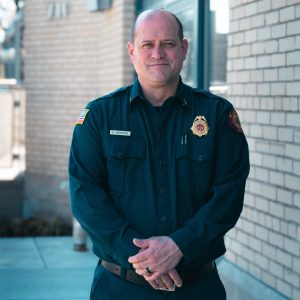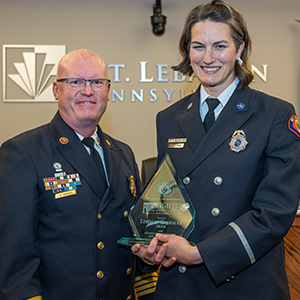priority report

At the beginning of the year, the Mt. Lebanon Commission asked several boards and authorities to come up with their lists of priorities for action in 2018. On April 30, the boards reported to the commission on the progress they had made.
Community Relations Board held the first-ever Mt. Lebanon Residents’ Academy, an eight-week program that introduced residents to all aspects of local government. The board also held the Community Services Award program and honored this year’s winner, Peter DiNardo, along with Hal Hasley, who received the award last year at the biannual Volunteer Appreciation Dinner. Recently, the board voted to work with the library on a Harwood Institute Initiative that involves holding Community Conversations about quality of life moderated by trained faciltators.
Historic Preservation Board is working with the help of a consultant to develop voluntary design guidelines for properties in Mt. Lebanon’s National Historic District. The project is an extension of the voluntary guidelines that previously were created specifically for Virginia Manor. “We’d like to make the guidelines more concise, accessible and easier to use,” says Jim Martin, board chair.
The board is also working on a design for eight new entry signs that would identify Mt. Lebanon’s historic district. The signs are still in the planning phase and would require commission approval before any action could be taken.
Parks Advisory Board is seeking to update its 14-year-old parks master plan. A large percentage of the recommendations in the 2004 plan, which was produced by the planning firm LaQuatra Bonci, have been adopted. Those improvements included upgrading playground equipment in several parks, and stream and woodland restoration in Bird Park. The board is also working to identify and inventory park trees using Mt. Lebanon’s Geographic Information System and wants to continue the Twin Hills invasive species control project that began last year. Other projects include tree replacement in Williamsburg and Rockwood parks, both of which received extensive improvements in 2017.
Sports Advisory Board is discussing commissioning a feasibility study for a multipurpose recreational facility, similar to those in Upper St. Clair and Peters Township. The facility would have amenities such as an indoor track, basketball and volleyball courts, exercise rooms and meeting rooms. Board member Dave Franklin said the project is still very much in the talking stages. “We could bring in a consultant to tell us if this is even something we could pull off. And if we could, where would it be? What would it look like? How much would it cost?” Franklin told the Commission, adding that some of the 11 sports organizations with representatives on the board would be willing to contribute money for a feasibility study. The board also advocated for converting the tennis courts on N. Meadowcroft Avenue into pickleball courts. Pickleball, a paddle sport that incorporates elements of tennis, badminton and ping-pong, is popular and fast-growing, says Franklin, especially with seniors. “If you have bad knees and can’t play tennis anymore, or squash or racquetball, this is the sport for you,” he says. Franklin says most neighboring communities already have pickleball courts.
Environmental Sustainability Board is working to promote business recycling and composting, and to educate the public about ways to reduce pollutants, most notably pollutants that find their ways into stormwater catchbasins.
Parking Facilities Board wants to start a discussion on a long-range plan for the 52-year-old South Garage, answering questions such as, should the garage remain in its present form, or has Mt. Lebanon’s parking situation changed sufficiently since 1966 to justify using the space for something else, such as mixed-use parking and retail, or should the structure be razed and replaced with something new? “What is the function of the space?” asked board member Andrew Flynn. “What should we do with it?” The board wants to gain input from interested stakeholders and coordinate with other boards to determine the best use for the space.
Economic Development Council is working on a plan to implement public space improvements to the Washington Road business district, focusing specifically on suggestions to improve the streetscape, connect to the T and improve Parse Way. The plan is the result of a study conducted last year by a consultant, and also includes ideas for improving infrastructure and providing public art. The council is also working on developing incentives for new and existing businesses, such as façade grants and improvements in connection with the Americans with Disabilities Act (ADA).





